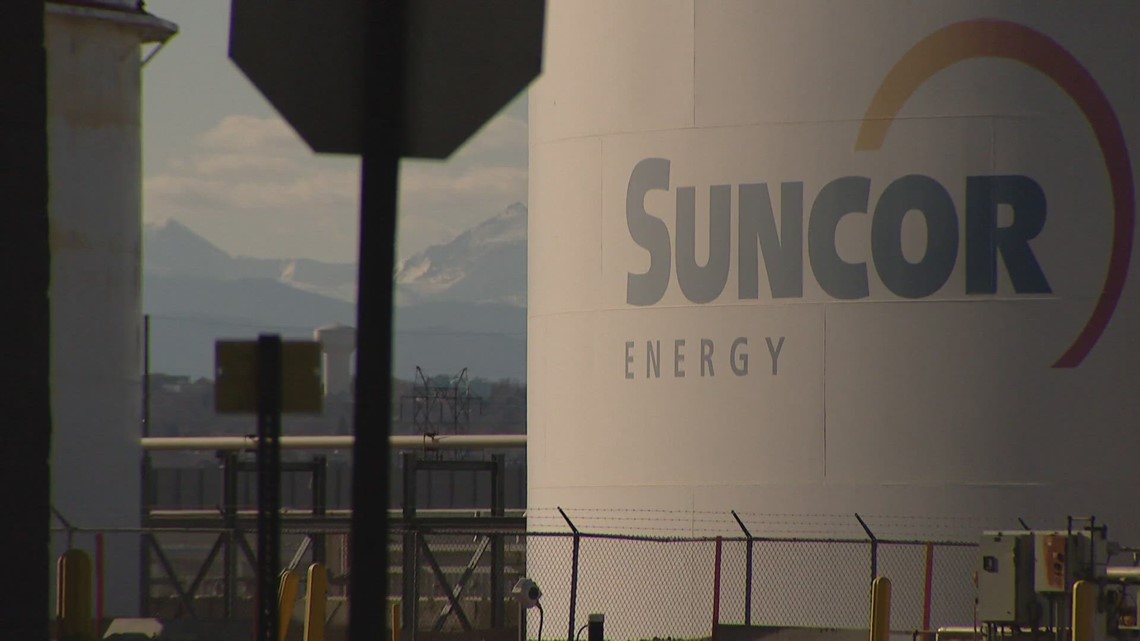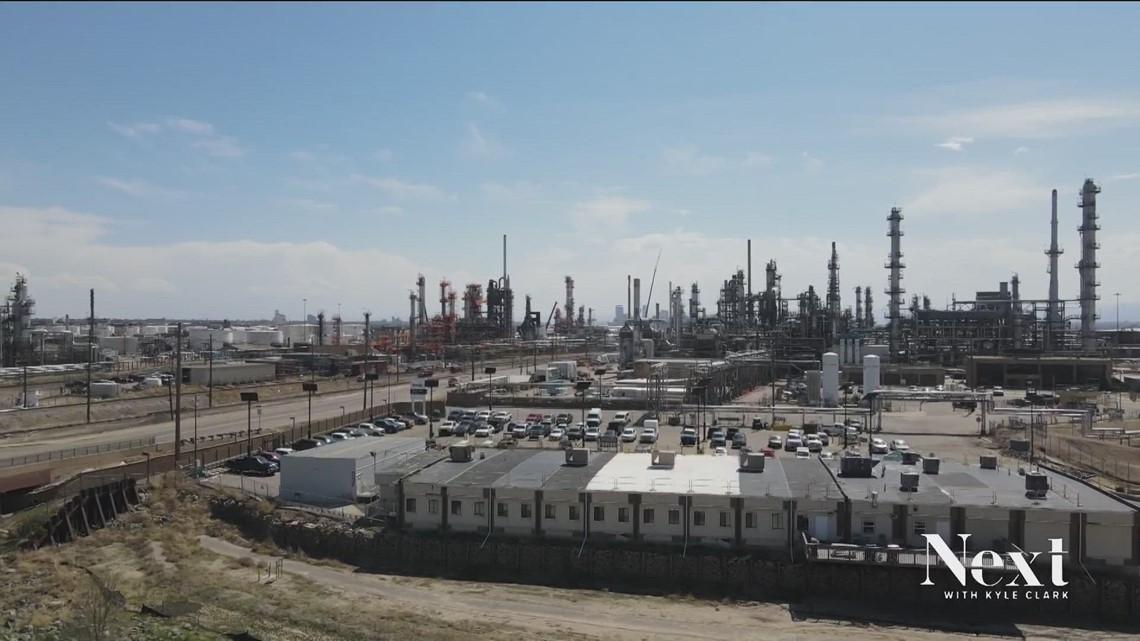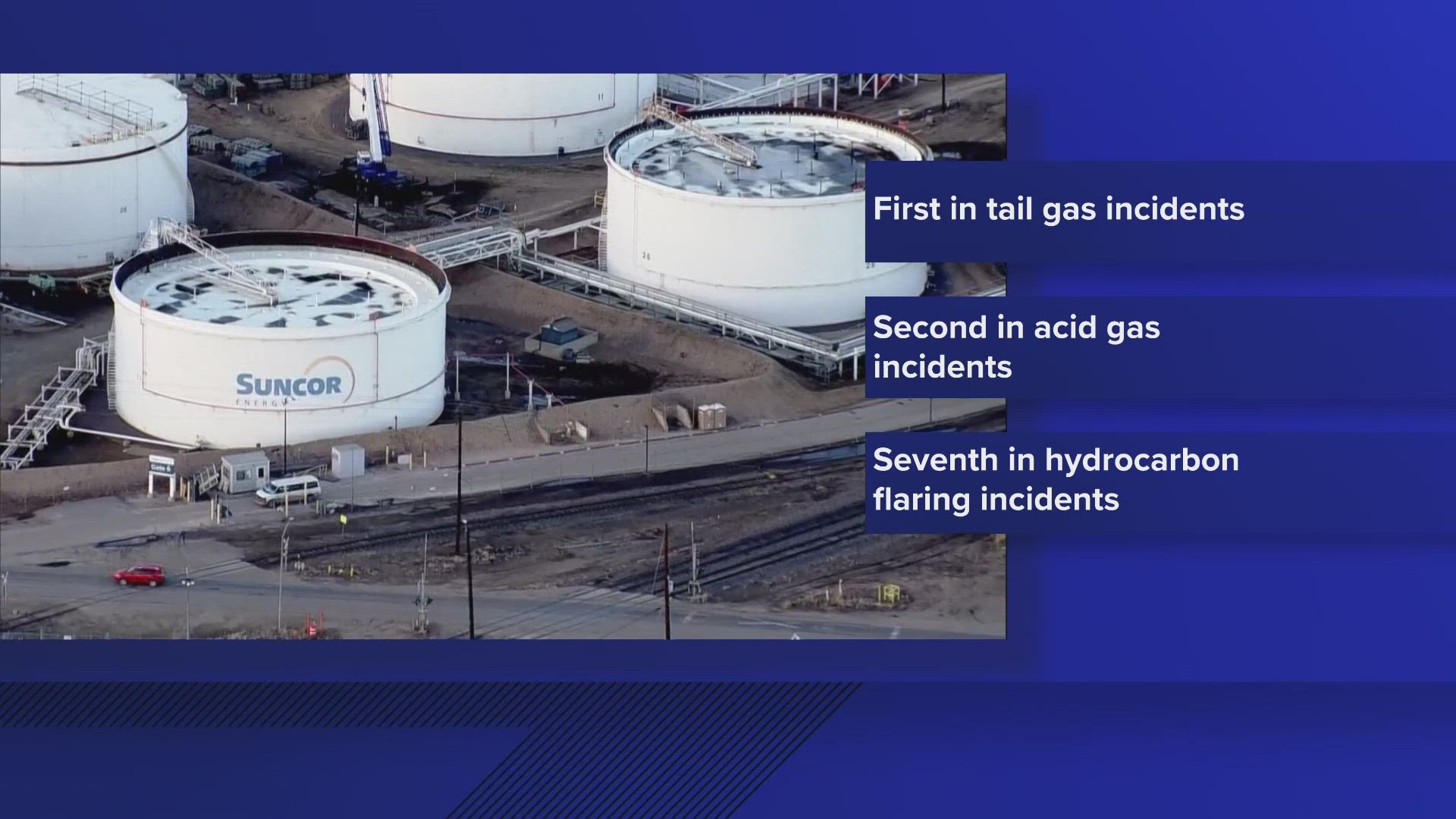COMMERCE CITY, Colo. — An analysis by the U.S. Environmental Protection Agency (EPA) released Friday shows the Suncor petroleum refinery in Commerce City had a higher frequency of air-quality incidents than similar refineries across the country, possibly due to inadequacies in preventative maintenance, testing, and inspection.
"The analysis illuminates the major causes and sources associated with the release of potentially harmful contaminants from the Suncor facility including sulfur dioxide, hydrogen sulfide, and other chemical compounds," said EPA Regional Administrator KC Becker.
The EPA compared the causes and frequency of incidents at Suncor to 11 other refineries nationwide that operate under similar requirements. The goal was to understand what other refineries might be doing differently to help inform potential measures to reduce air pollution from the Suncor facility.
"Our plan is we will use this information from the analysis to target and focus our inspections," said Suzanne Bohan, the EPA Enforcement and Compliance Assurance Division Director. "This information will inform where we're looking at with respect to those inspections."
According to the analysis, from 2016-2020, Suncor had the most tail gas incidents that caused releases of excess sulfur dioxide. Suncor also had the second-most acid gas incidents releasing hydrogen sulfide gas.
Suncor was in the middle of the comparison group with the seventh most hydrocarbon flaring incidents out of the 12 refineries, the EPA said.
"This isn't just a paper exercise," said Becker. "It's a step toward improving Suncor's compliance and its operational performance and reducing incidents leading to air emissions that can harm nearby communities."


The incidents might be due to inadequacies in preventative maintenance, testing and inspection of liquid level control systems and electrical equipment, according to the EPA analysis.
The EPA’s analysis considered the root causes identified in an investigation conducted by Suncor’s consultant as part of Suncor’s Settlement Agreement. That previous investigation found underlying issues related to poor communication, unclear delineation of responsibilities and insufficient processes and resources to prevent issues from becoming more severe.
The Colorado Department of Public Health and Environment (CDPHE) and the EPA will use the analysis to inform future inspections, investigations, permit updates and enforcement actions with Suncor.


CDPHE is also evaluating its authority to require Suncor to make changes at the facility to prevent future incidents. The agency also intends to establish a refinery expert position within CDPHE to help improve operations and accountability at Suncor.
“Air quality and health are linked in so many ways. We know people who live near multiple air pollution sources face disproportionate impacts, including the communities surrounding Suncor,” said Trisha Oeth, CDPHE's director of Environmental Health and Protection.
“This important analysis provides vital information to protect clean air for all Coloradans, no matter where they live. We anticipate the findings will result in direct actions for Suncor to make improvements.”
SUGGESTED VIDEOS: Colorado Climate

